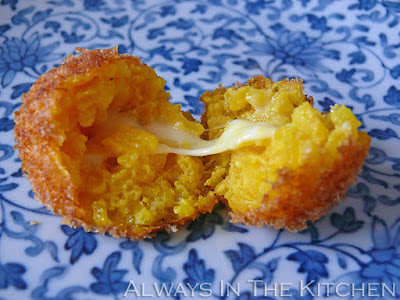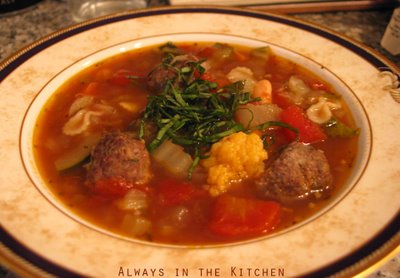
This recipe was partly inspired by the fact that I had a can of artichoke bottoms to use up, and partly inspired by the fantastic smoked duck & artichoke étouffée that my husband makes. It's such a great combination, and I figured it would translate well to lasagna. And boy, did it ever! I decided against a tomato base for this lasagna because I thought bechamel would better offset the smokiness of the duck between the layers of pasta.
We served this with Prosecco (highly recommended), and chased it with a bright-tasting, lightly dressed, veggie-packed salad.
Smoked Duck & Artichoke Lasagna Bianca
Serves 6
one 20 x 30cm baking dish
Ragú Layers
1 smoked duck breast (about 300 grams), finely chopped
75 grams pancetta, finely chopped
1 400 gram can artichoke bottoms (220 grams drained weight), chopped
1 medium onion, finely chopped
3 large King Oyster Mushrooms, finely chopped (about 3 cups)
2 cloves garlic, minced
2 tablespoons duck fat
1/2 cup duck broth/fond
2 sprigs fresh thyme
pinch coarse salt
2-3 tablespoons dry vermouth or dry white wine
1 tablespoon all-purpose flour
water, as needed
Ricotta layer
250 grams ricotta
1 egg, beaten
2 tablespoons minced parsley
2 tablespoons grated parmesan cheese
Bechamel layers
3 cups whole milk
60 grams all-purpose or blending flour
65 grams butter
1 bayleaf
pinch white pepper
small pinch nutmeg
Noodles
Enough fresh or no-boil lasagna noodles to cover the bottom of your pan three times.
Extra
1 1/2 cups coarsely grated parmesan cheese
2 tablespoons parsley, for finishing
Process is rather important here, so make sure you have a very clean space to work in - it's about to get messy.
Prepare the ragú layers first: Heat the duck fat in a large skillet, and sauté the onion and the pancetta. Add the mushrooms, and continue to sauté while you chop up the duck and the artichokes. Add the thyme, and the pinch of salt, and stir through. Deglaze the pan with a tablespoon or so of vermouth or dry white wine, as needed. Add the duck and artichokes to the pan, and stir well. Add the minced garlic, and stir through again. Sauté until the ingredients start to catch, and the mixture has become dry. Add a bit more vermouth, and stir again. If the mixture is still quite dry, add a couple of tablespoons of water. Sprinkle the flour over the mixture, and stir it in. Allow the mixture to simmer very gently on the lowest heat, covered, while you prepare the other elements. Stir occasionally, and if it looks like it's drying out, add a little more water.
Grate the parmesan cheese and chop the parsley, including the amounts that you need for the ricotta layer.
Combine the ingredients for the ricotta layer in a bowl, and set aside.
For the bechamel layer: you can make this using the roux method, but given the long cook-time in the oven, it's not strictly necessary. Combine the cold milk and flour in a saucepan, and add the butter. Over medium heat, stir the mixture until the butter melts and the sauce begins to thicken. Stir carefully, scraping the bottom, to ensure nothing burns. Add the bayleaf, the white pepper, and the nutmeg. Be very discreet about the nutmeg, you just want a whisper. Continue to stir and cook until it is nicely thickened, and then stir in a pinch of salt, and remove from the heat. It is time to start layering.
First, preheat your oven to 350°F/ 180°C, with a rack in the lower-middle position.
Prepare your baking dish: either spritz it with a bit of canola oil, or a thin layer of butter, as you wish. Place a small amount of bechamel in the bottom of the dish, and spread it around thoroughly. This helps keep the first layer of noodles from adhering to the dish.
Add a layer of noodles, and then half of the duck mixture. Sprinkle with 1/3 of the grated parmesan, and dollop the ricotta mixture (all of it) over the parmesan. Spread the ricotta so that it makes a more-or-less even layer. Drizzle with a third of the remaining bechamel. Add the second layer of noodles, and repeat the duck mixture and parmesan layers. Top those with half the remaining bechamel (you have already used all the ricotta in the layer below), and add the third layer of noodles. Pour the remaining bechamel over the third layer of noodles, and spread it around so that it perfectly covers everything. No noodle bits should be bare, no duck bits should be peeking out of the sides. Cover the Bechamel with the last of the parmesan, and sprinkle with parsley.

Place the dish, uncovered, in the oven, and bake for 30 minutes. If the top is not nicely spotted with golden flecks, crank up the broiler and give it another couple of minutes (watch closely!) until the surface is attractively browned, and then remove from the oven and place on a hot pad. Allow the lasagna to stand, uncovered, for 15 minutes once it comes out of the oven, to make for easy, mess-free slicing. Use a serrated knife to cut into six portions (and loosen the lasagna from the edges of the dish, and use a lifting spatula/flipper to ease each piece up and onto a plate.

Once again, Prosecco is the perfect drink with this.






























